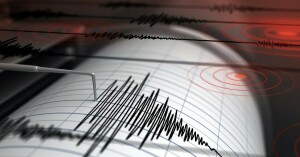LONDON: Sterling steadied on Monday after Bank of England Governor Andrew Bailey said the current inflation surge was the central bank’s biggest challenge since it gained independence in 1997.
In a choppy day, sterling had fallen both against the US dollar and the euro as weak Chinese economic data added pressure on risky currencies. But it reversed some of those declines to trade flat after Bailey’s speech to the Treasury Committee in the lower house of parliament.
He said the current high inflation “is a bad situation to be in.” He added he did not think the central bank could have done anything to stop it.
Investors scaled down their expectations for Bank of England interest rate rises. Money markets were pricing in around 133 basis points (bps) of BoE rate hikes by year-end earlier in London morning trading, from 144 bps in April. They now expected 111 bps by December.
“Previously a huge proportion of rate hikes had been priced in to the market, (and) this outlook is now being re-assessed,” said Jane Foley, head of FX at Rabobank London.
“The market has been turning its attention to recession risks in the UK,” she also said.
Expectations for rising interest rates tend to boost the value of a currency.
The BoE earlier this month raised interest rates to their highest level since 2009, hiking by a quarter of a percentage point to 1%. It warned that Britain risks a recession.
Investors will be watching a slew of UK economic data due this week including job numbers on Tuesday, expected to be under pressure, and inflation on Wednesday, seen jumping to 9.1%.
Risk-sensitive sterling has fallen almost 10% against the dollar this year as the war in Ukraine, rising inflation, poor domestic economic growth and fears of a slowdown in the global economy amid COVID-19 lockdowns in China have hit risk sentiment.
“Sterling’s short-term outlook remains strictly tied to developments in global risk sentiment,” said Francesco Pesole, FX strategist at ING.

























Comments
Comments are closed.